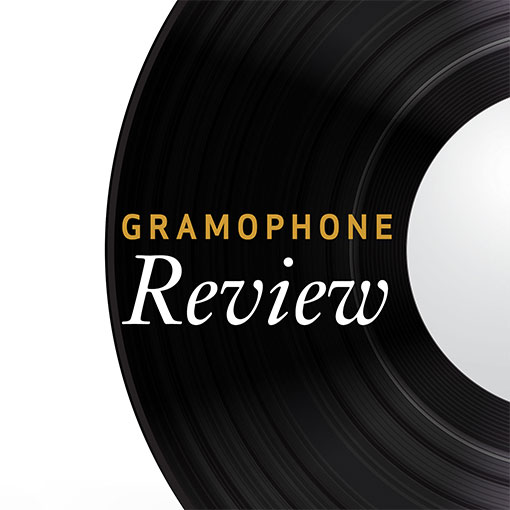Lloyd, G (A) Symphonic Mass
View record and artist detailsRecord and Artist Details
Composer or Director: George Lloyd
Label: Albany
Magazine Review Date: 12/1993
Media Format: CD or Download
Media Runtime: 61
Mastering:
DDD
Catalogue Number: TROY100-2

Tracks:
| Composition | Artist Credit |
|---|---|
| (A) Symphonic Mass |
George Lloyd, Composer
Bournemouth Symphony Orchestra Brighton Festival Chorus George Lloyd, Composer George Lloyd, Conductor |
Author: Ivan March
I had the stimulating experience of attending the premiere of this work at the Brighton Festival earlier in the year, so its principal melodic ideas, warmly recognizable, were firmly in my head when I began listening to this magnificent recording. It is a joy to come across such a powerful expression of faith—in humanity as well as God—written in our own time that utterly eschews barbed wire and avant-garde self-consciousness, producing writing which is real and genuinely inspired.
The music is immediately communicative, deeply felt and without a single facile bar. Although, of course, there is much else besides, the structure has at its core a principal motif, a real tune, which continually re-creates itself throughout the work at key moments. The first three minutes of the Kyrie should convince anyone of the dazzling power of Lloyd's inspiration. It bubbles with creative energy as the cry ''Kyrie'' is heard again and again, the setting constantly changing in harmony, colour and texture. The lyrical melodic germ of the work is instantly apparent when it appears (3'42'') sotto voce, to the words ''Christe eleison'', a moment to send a shiver down the spine. Lloyd has told us that he chose the piece's title carefully, for while he uses the Latin text of the Mass, his working is designedly non-liturgical in conception: thus, he was able to 'square' his own beliefs with his textual sources.
The Gloria opens radiantly but is seemingly distanced, decorated with flutes, with the female voices leaping up in their opening phrase and glowingly but gently simulating a heavenly host. A lovely warm melody appears as the men enter for the ''Laudamus te'' and the writing gains amplitude—as if a human chorus has joined the angels—while the brass exuberantly underlines the meaning of the words, uplifting the spirit. The fiery energy now abates and the mood is rendered austere by the woodwind: alternating bare statements of ''Qui tollis, peccata mundi'' (5'13''), first by male and then by female voices, each subtly changing in colour, are very touching. With ''Cum Sancto Spiritu'' the female voices take over with a lighthearted feeling (9'32'') bringing an engaging sense of optimism, then the Gloria itself returns triumphantly (9'56'') to cap the movement. A slow descrescendo follows and the soft horn colouring (11'00'') adds to the sense of peace at the close.
The Credo opens boldly with a powerful affirmation from the brass (with perhaps a little questioning from the angular woodwind, followed by the choir reiterating the word ''Credo'' less strongly). Lloyd's main theme now returns (1'38'') to give the simple statement of the Christian belief a humanist warmth: ''I believe in one God''. There is a frisson-creating moment as the brass join in (2'46'') and at the words ''Deum de Deo'' the music explodes in a great climax. The part of the Creed dealing with the Holy Ghost, the Virgin Mary (a shivery moment), Crucifixion and Resurrection is set with real imaginative power and an enormous climax is reached (9'00''), when the words ''Et in Spiritum Sanctum'' (''And I believe in the Holy Ghost...'') bring a bold, confident declaration against a cacophonous melee of percussion, led by energetic side-drum snares and a rattling wooden block, punctuated with the tamtam, as if the gates of heaven and hell were opening simultaneously; after that the tempest subsides. Called by the solo horn, the choir return (10'53'') to restate the Creed to a heart-warming, glorious new version of the main theme, with the brass entering triumphantly at the peak (11'53''). Followed by yet another percussive cataclysm and a strident ''Amen'', the clenched-fist tension evaporates and the movement ends gently. A much needed orchestral interlude, provided by the three-minute ''Offertorium'' follows, the horns remember the main idea and then, as Lloyd himself says, ''a solo violin and solo cello talk to each other''. We take a deep breath.
The tremendous climax of the whole work is the combined Sanctus and Benedictus (nearly 13 minutes long), with the latter framed centrally. The choir first intone quietly, with ethereal violins leading to a pure, flowing flute idea derived from the main motif (1'01''). The repeated word ''Sanctus'' dominates the movement lyrically and dramatically, while the word ''Osanna'' swiftly generates a brilliant fantasia (2'33'') and at the great statement ''Osanna in excelsis'' (3'14''), underpinned by bass drum and brass, there is a momentary reminder of Walton.
By placing the Benedictus centrally within the Sanctus, Lloyd can end that movement with this heart-rending cry of anguish, thus leaving the Agnus Dei to resolve the drama. The only fault in this plan is that the communicative force of that climax is so great that it makes the closing Agnus Dei come almost as an anticlimax. I felt this at the live performance and also the first time I heard the recording, but now I am sure Lloyd knew just what he was about. Certainly he keeps up the concentration in his performance here.
Introduced by a brief flute chorale, the Agnus Dei opens austerely and proceeds as a melancholy little march. But human warmth is never really far away and the spartan mood is relieved a little by the words ''Miserere nobis'', and finally lightened at the ''Donna nobis pacem'', which almost develops the feeling of a graceful dance. Then against distant bells the ''Miserere nobis'' gathers pace and fervour. At 5'38'' the Agnus Dei begins floating forward in a vein of warm, purposeful lyricism, doubts seemingly almost resolved in a surge of intense feeling. This is followed by an arresting solo trumpet (7'30''—the last trump?) which leads to the reprise of the words ''Donna nobis pacem'' (''Grant us Thy peace''). Lloyd tells us this became unbearably poignant for him while composing the Mass, and the music at last finds peace in a gentle diminuendo into silence.
This, in my view, is one of the finest pieces of English choral writing of the twentieth century. Listening to it in the composer's electrically intense performance, so realistically reproduced, is a very moving experience. I do hope that I have said enough to convince readers how instantly rewarding this Mass is, and how readily it grows on one with familiarity. After one or two hearings you won't be able to stop humming that main theme. I hope choral societies will take it up too, and we certainly need to have it at next year's Proms.'
The music is immediately communicative, deeply felt and without a single facile bar. Although, of course, there is much else besides, the structure has at its core a principal motif, a real tune, which continually re-creates itself throughout the work at key moments. The first three minutes of the Kyrie should convince anyone of the dazzling power of Lloyd's inspiration. It bubbles with creative energy as the cry ''Kyrie'' is heard again and again, the setting constantly changing in harmony, colour and texture. The lyrical melodic germ of the work is instantly apparent when it appears (3'42'') sotto voce, to the words ''Christe eleison'', a moment to send a shiver down the spine. Lloyd has told us that he chose the piece's title carefully, for while he uses the Latin text of the Mass, his working is designedly non-liturgical in conception: thus, he was able to 'square' his own beliefs with his textual sources.
The Gloria opens radiantly but is seemingly distanced, decorated with flutes, with the female voices leaping up in their opening phrase and glowingly but gently simulating a heavenly host. A lovely warm melody appears as the men enter for the ''Laudamus te'' and the writing gains amplitude—as if a human chorus has joined the angels—while the brass exuberantly underlines the meaning of the words, uplifting the spirit. The fiery energy now abates and the mood is rendered austere by the woodwind: alternating bare statements of ''Qui tollis, peccata mundi'' (5'13''), first by male and then by female voices, each subtly changing in colour, are very touching. With ''Cum Sancto Spiritu'' the female voices take over with a lighthearted feeling (9'32'') bringing an engaging sense of optimism, then the Gloria itself returns triumphantly (9'56'') to cap the movement. A slow descrescendo follows and the soft horn colouring (11'00'') adds to the sense of peace at the close.
The Credo opens boldly with a powerful affirmation from the brass (with perhaps a little questioning from the angular woodwind, followed by the choir reiterating the word ''Credo'' less strongly). Lloyd's main theme now returns (1'38'') to give the simple statement of the Christian belief a humanist warmth: ''I believe in one God''. There is a frisson-creating moment as the brass join in (2'46'') and at the words ''Deum de Deo'' the music explodes in a great climax. The part of the Creed dealing with the Holy Ghost, the Virgin Mary (a shivery moment), Crucifixion and Resurrection is set with real imaginative power and an enormous climax is reached (9'00''), when the words ''Et in Spiritum Sanctum'' (''And I believe in the Holy Ghost...'') bring a bold, confident declaration against a cacophonous melee of percussion, led by energetic side-drum snares and a rattling wooden block, punctuated with the tamtam, as if the gates of heaven and hell were opening simultaneously; after that the tempest subsides. Called by the solo horn, the choir return (10'53'') to restate the Creed to a heart-warming, glorious new version of the main theme, with the brass entering triumphantly at the peak (11'53''). Followed by yet another percussive cataclysm and a strident ''Amen'', the clenched-fist tension evaporates and the movement ends gently. A much needed orchestral interlude, provided by the three-minute ''Offertorium'' follows, the horns remember the main idea and then, as Lloyd himself says, ''a solo violin and solo cello talk to each other''. We take a deep breath.
The tremendous climax of the whole work is the combined Sanctus and Benedictus (nearly 13 minutes long), with the latter framed centrally. The choir first intone quietly, with ethereal violins leading to a pure, flowing flute idea derived from the main motif (1'01''). The repeated word ''Sanctus'' dominates the movement lyrically and dramatically, while the word ''Osanna'' swiftly generates a brilliant fantasia (2'33'') and at the great statement ''Osanna in excelsis'' (3'14''), underpinned by bass drum and brass, there is a momentary reminder of Walton.
By placing the Benedictus centrally within the Sanctus, Lloyd can end that movement with this heart-rending cry of anguish, thus leaving the Agnus Dei to resolve the drama. The only fault in this plan is that the communicative force of that climax is so great that it makes the closing Agnus Dei come almost as an anticlimax. I felt this at the live performance and also the first time I heard the recording, but now I am sure Lloyd knew just what he was about. Certainly he keeps up the concentration in his performance here.
Introduced by a brief flute chorale, the Agnus Dei opens austerely and proceeds as a melancholy little march. But human warmth is never really far away and the spartan mood is relieved a little by the words ''Miserere nobis'', and finally lightened at the ''Donna nobis pacem'', which almost develops the feeling of a graceful dance. Then against distant bells the ''Miserere nobis'' gathers pace and fervour. At 5'38'' the Agnus Dei begins floating forward in a vein of warm, purposeful lyricism, doubts seemingly almost resolved in a surge of intense feeling. This is followed by an arresting solo trumpet (7'30''—the last trump?) which leads to the reprise of the words ''Donna nobis pacem'' (''Grant us Thy peace''). Lloyd tells us this became unbearably poignant for him while composing the Mass, and the music at last finds peace in a gentle diminuendo into silence.
This, in my view, is one of the finest pieces of English choral writing of the twentieth century. Listening to it in the composer's electrically intense performance, so realistically reproduced, is a very moving experience. I do hope that I have said enough to convince readers how instantly rewarding this Mass is, and how readily it grows on one with familiarity. After one or two hearings you won't be able to stop humming that main theme. I hope choral societies will take it up too, and we certainly need to have it at next year's Proms.'
Discover the world's largest classical music catalogue with Presto Music.

Gramophone Digital Club
- Digital Edition
- Digital Archive
- Reviews Database
- Full website access
From £8.75 / month
Subscribe
Gramophone Full Club
- Print Edition
- Digital Edition
- Digital Archive
- Reviews Database
- Full website access
From £11.00 / month
Subscribe
If you are a library, university or other organisation that would be interested in an institutional subscription to Gramophone please click here for further information.





